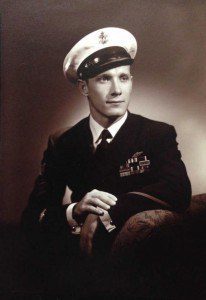
Over the last 20 years, I have had the chance to meet a number of members of the Greatest Generation. It’s been a mission (if not an obsession) of mine. My purpose for the large part has been to find and meet people who knew or were somewhere near my grandfather, Lt Cdr Minter Dial, after whom I was named. So, it was only natural that, since I was headed to Austin Texas for SXSW 2014, I connected with a USN veteran of World War II. His name is Charles “Tim” McCoy, who served in the US Navy, aboard a number of submarines, before becoming a prisoner after the USS Grenadier was sunk (April 1943).
I came across Tim thanks for an article published in the Lubbock Avalanche Journal, written by Ray Westbrook.
Charles Tim McCoy
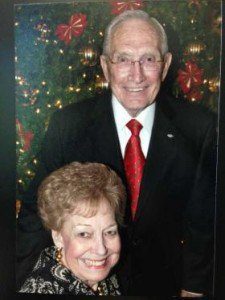
Tim McCoy, who is 90 years old (born in 1924), showed that he is in great mental and physical health. For two hours, I listened to him talk about his experience in the Pacific, including his captivity as a prisoner of Japanese for over two years. Anybody who has come across the book Unbroken, by Laura Hillenbrad (soon to be a film, directed by Angelina Jolie), or any other book about the Japanese POW treatment will know just how horrible that experience was. During our chat, I was lucky enough to hear directly from Tim, about his participation in a truly epic and well-documented mission aboard the USS Trout.
The USS Trout (202)
The USS Trout story is one of extreme bravery. For a submarine that usually had a crew of 60 men, as Tim recounted it to me, this particular mission was filled of volunteers, and numbered less than 40. The Trout’s mission was to supply ammunition to the beleaguered island of Corregidor. For this purpose, the USS Trout left Hawaii without its usual set of torpedoes and defenses, in order to load it to the hilt with ammunition and supplies for the troops on Corregidor, where it arrived February 2, 1942.
Trout fishing for gold
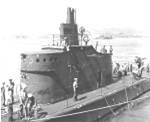
In the stealthiest of maneuvers, coming under cover of night, the men of the Trout unloaded all its cargo during the night. Then during the day, the Trout spent daylight under refuge of the sea. On the second night, per Tim, they were given a new assignment: to load all the existing gold bullion that had been ferreted away from Manila before its capture. In this manner, the Japanese were deprived of the Philippines’ gold and silver reserves.
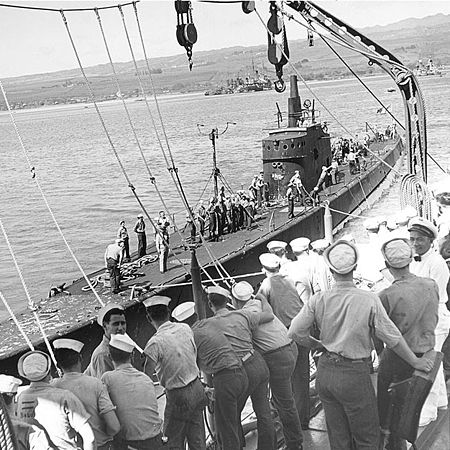
The story in History
As with so many of these war stories, there are some discrepancies in the various accounts. The most interesting one regards the reason why the gold was taken. Either the gold was taken because of a need for ballast. Or it was a pre-meditated reason for going to Corregidor in the first place (alongside bringing the supplies).
A second ‘story’ regards the amount of gold. It seems that one of the ingots got “lost” in the shuffle. Apparently, the ‘missing’ ingot showed up in California when Mr Willoughby, who had been overseeing the Philippine treasures, “turned up in San Francisco with a sheepish grin and one bar of gold, which he turned over to authorities, saying, ‘Here’s one I forgot.'” This was reported by TIME magazine. (Source: Home of Heroes)
In the story that I heard from Tim and the various accounts online about the USS Trout, there were some other small differences. But, no matter, it was wonderful to be able to hear about this story from someone who was there.
Epilogue
Two months later, Corregidor was invaded and captured by the Japanese. My grandfather and more than 12,000 allied men and women were taken prisoner. And, as I have documented before, only 6 of every ten prisoners made it back alive. Most of these survivors were scarred forever by the horrific experiences they suffered as prisoners of the Japanese. Tim transferred to USS Grenadier after that mission. The USS Trout, after making some 10 missions, was sunk in 1944, losing all 81 crew.
The words and memories of Tim McCoy were crisp and level. To think that this man was only a few hundred meters from my grandfather, just before his captivity, was incredibly meaningful for me. Tim kindly drove me all the way downtown, driving with greater precision and verve than the vast majority of other drivers. Kudos!
Thank you, Tim, for sharing your story, and for inspiring me to do more important things with my life.

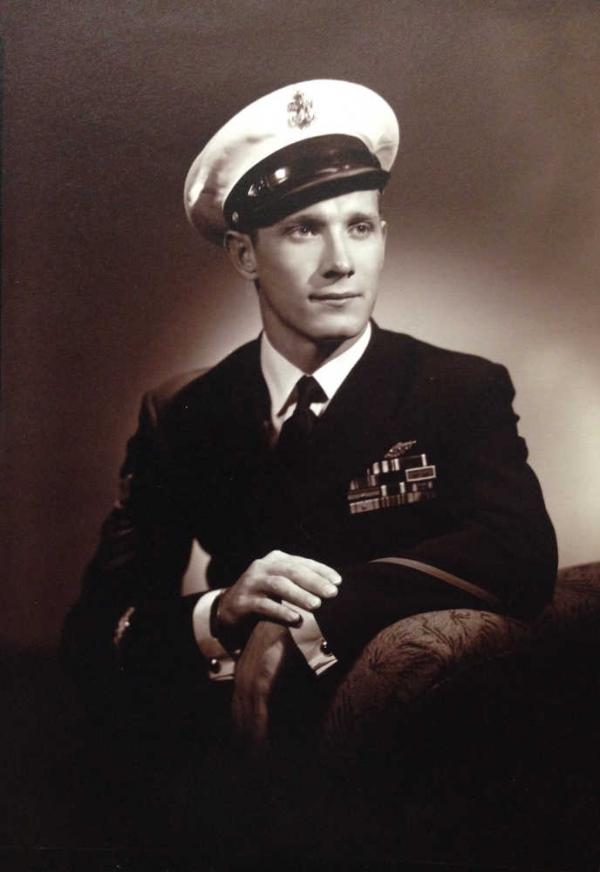










minter, keep looking up,
Thanks for coming by, Tim! Honored.
My father was also on the USS Grenadier when they were captured. I have been trying to fill in some of the blanks about the Grenadier and their POW experiences. One was if the fairwater had been converted to the “low profile”. In my search, I read that it was scheduled to be done but could not confirm if it was before or after the 6th and last patrol. I have read that the first plane that attacked was a twin-engine light bomber, a sea-plane, and a monoplane. I read that the second plane was possibly a single engine plane that they managed to hit with gunfire. I have gotten several latitude and longitude sites where they sank and that they were possibly near the Pilgrim Islands. There are groups of technical divers that are looking for the wrecksite and if they find it, I plan to visit. There is a photo of my Dad when he was liberated from Omori POW camp on 29 August 1945 in which he is waving an American Flag that he and several other POWs made. Also in the photo is another Grenadier crewmember, Norman “Al” Albertsen who also helped with the Flag. After many years of searching, I found the Flag with the help of Jeanna Johnson Smith (Johnny Johnson’s daughter) and “Al’s” future niece at the Washington Navy Yard. It is currently on display at the Virginia War Memorial in Richmond, Virginia. I am trying to put names on the people in the photos from that time. Both photos from their submarine experiences and POW photos. I have been trying to contact Tim McCoy but have had no success.
Jerry,
If you are still out there and looking for answers and information regarding USS Grenadier please get in touch with me. I am at philjaskoviak@Hotmail.
I will make sure Jerry gets your message! Thanks Phil.
I knew Lt. McCoy from early Dec.1963 until I left the Navy and Submarine Base Pearl Harbor 26 Feb. 1966. He was an honorable and dedicated man. I was given an E-6 billet and my duty nights consisted of MA patrols under Lt. McCoy who was the Master of Arms for the submarine base. He loved the American Bluejacket and was a good friend to have if you ran afoul of the Marines on the Gates. Anyway, I was honored to serve with and for him.
Hello Mr Baker, I’m delighted to read your comment and the kind words you have to share about Lt McCoy. I feel deeply privileged to have had the chance to meet him and other members of the Greatest Generation. So much we can learn from and to be thankful for. My work on The Last Ring Home helped bring home for me just how lucky we are today.
Mr. McCoy…..my name is Pascual Goicoechea. I served eight years enlisted in the USN, and an additional 33 as commissioned officer of Infantry in the US Army. I am doing research on an uncle, CWO4 Vernor Feild who served in the USN from Dec 1934, until December 1965. He retired from Dahlgren. He earned the Silver Star for his actions ‘in a submarine he hitched a ride out of Corregidor with gold and dignitaries’. He was not a regular crew member of the sub, but I understand he was one of the guys who may have been aboard at the time they left Corregidor. How do I go about finding that manifest list? Feel free to phone me at your convenience. Respectfully, Pascual (919) 830-1326
Hi Pascual, First of all, thank YOU for your service. It’s been nine years since I wrote this post, so no longer have uptodate details for Mr McCoy… I wish you good luck in your search!
Hello, Unfortunately our Papa Tim passed on to be with Jesus in December of 2019. I was looking for some other photos of him and found this page. We adopted Papa Tim as a grandfather back in the 1980’s. My son is named after him. No greater man, he is so missed. He now rests in the arms of Jesus. I wish you well on your search for answers.
What a lovely message to read, Kimberly. I remember well and fondly my visit with Tim… now nearly 10 years ago. His wife was so lovely too!